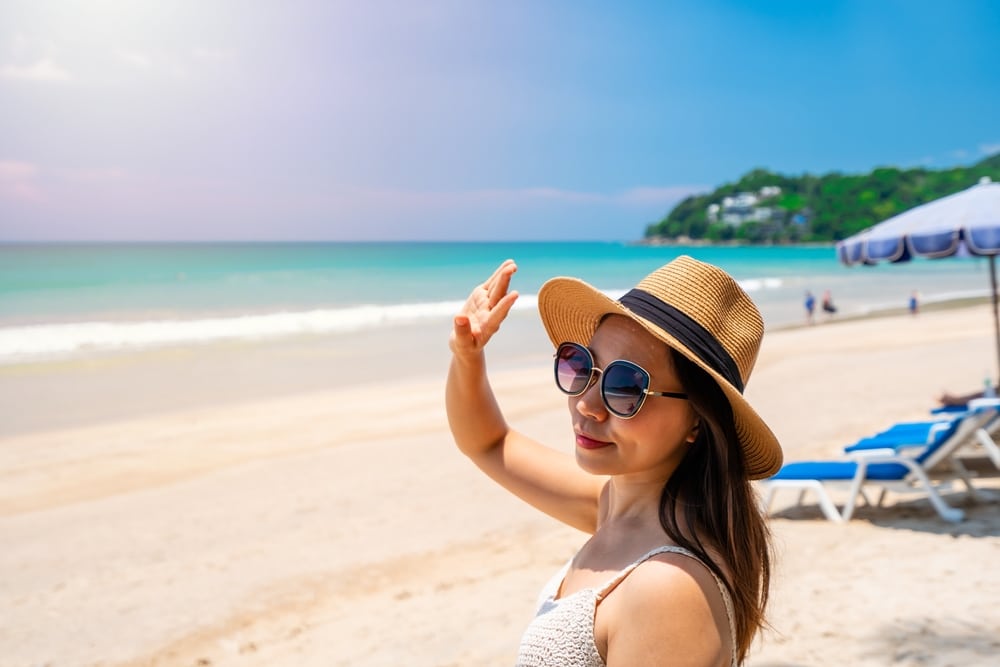UV radiation (ultraviolet radiation) is a form of electromagnetic radiation emitted by the sun. While it is invisible to the human eye, it can have a significant impact on health. Especially on summer vacation, when you spend a lot of time outdoors, it is important to be aware of the dangers of UV radiation and to take appropriate protective measures. In the following article, you will find information about UV radiation and how high it is in your holiday country.
Types of UV radiation
There are three main types of UV radiation:
- UVA: These rays penetrate deep into the skin and contribute to skin aging and the risk of skin cancer.
- UVB: These rays are responsible for sunburn and play a key role in the development of skin cancer.
- UVC: These rays are absorbed by the Earth’s atmosphere and do not reach the Earth’s surface.
Dangers of UV radiation
- Sunburn: Short-term overexposure to UVB rays can cause painful burns that damage the skin.
- Skin cancer: Long-term exposure to UV rays can lead to various forms of skin cancer, including melanoma, which is particularly dangerous.
- Skin aging: UVA rays accelerate the aging process of the skin, leading to wrinkles and a loss of skin elasticity.
- Eye damage: UV radiation can cause eye damage such as cataracts and photokeratitis (snow blindness).
- Immune system: Excessive UV exposure can weaken the immune system and interfere with the body’s ability to fight infection.
Protective measures
To protect yourself from the harmful effects of UV radiation, the following measures should be taken:
- Sunscreen: Use a broad-spectrum sunscreen with a high sun protection factor (SPF) to block both UVA and UVB rays.
- Clothing: Wear protective clothing, a wide-brimmed hat, and sunglasses with UV protection.
- Shade: Seek shade, especially during peak hours of UV radiation between 10 a.m. and 4 p.m.
- Self-tanner: Use self-tanners instead of sunbathing or tanning beds to achieve tanned skin.
- Regular skin examinations: Check your skin regularly for unusual changes and consult a dermatologist if you suspect it.
UV radiation risk in different countries
High UV radiation (UV index 8-11)
- Africa
- Egypt
- Algeria
- Botswana
- Kenya
- Libya
- Madagascar
- Morocco
- Mauritius
- Namibia
- Niger
- Nigeria
- Seychelles
- South Africa
- Sudan
- Tanzania
- Tunisia
- Uganda
- Zimbabwe
- Asia
- India
- Indonesia
- Iran
- Israel
- Jordan
- Kuwait
- Malaysia
- Maldives
- Oman
- Pakistan
- Philippines
- Saudi Arabia
- Sri Lanka
- Syria
- Thailand
- U.A.E
- Viet Nam
- Oceania
- Australia
- Fiji
- New Zealand
- Papua New Guinea
- South America
- Argentina (Northern Regions)
- Bolivia
- Brazil
- Chile (Northern Regions)
- Colombia
- Ecuador
- Paraguay
- Peru
- Venezuela
- North America and Central America
- Bahamas
- Belize
- Costa Rica
- Cuba
- Dominican Republic
- El Salvador
- Guatemala
- Haiti
- Honduras
- Jamaica
- Mexico
- Nicaragua
- Panama
- USA (southern states such as Florida, Texas, Arizona)
Medium to high UV radiation (UV index 6-7)
- Europe
- Greece
- Italy
- Portugal
- Spain
- Turkey
- Asia
- Afghanistan
- Armenia
- Azerbaijan
- Georgia
- Kazakhstan
- Kyrgyzstan
- Lebanon
- Tajikistan
- Turkmenistan
- Uzbekistan
- South America
- Argentina (Middle Regions)
- Chile (middle regions)
- Uruguay
- North America
- USA (Middle States)
Medium UV radiation (UV index 3-5)
- Europe
- Belgium
- Germany
- France
- Ireland
- Netherlands
- Austria
- Switzerland
- United Kingdom
- Asia
- China
- Japan
- South Korea
- North America
- Canada
- South America
- Argentina (Southern Regions)
- Chile (Southern Regions)
Low UV radiation (UV index 1-2)
- Europe
- Denmark
- Estonia
- Finland
- Iceland
- Latvia
- Lithuania
- Norway
- Sweden
- Asia
- Mongolia
- Russia (Northern Regions)
- North America
- Canada (Northern Regions)
- Greenland
Special features and exceptions
- In countries with a large geographical extent, such as the USA, Russia and China, UV index values can vary greatly. In the southern parts of these countries, UV levels are usually higher than in the northern regions.
- Altitude has a significant influence on the UV index. In mountainous regions such as the Andes in South America or the Himalayas in Asia, the UV index can be higher than in the lowlands.
This classification serves as a general guide. It is always advisable to consult the daily updated UV index forecasts and local weather reports to ensure the best possible protection.
Result
UV radiation poses a significant risk to health, especially during summer holidays. By observing appropriate protective measures and being aware of local UV risks, the negative effects can be minimized. Stay informed and protect yourself and your family from the harmful effects of UV radiation to enjoy a safe and healthy holiday.


